
Feel free to add tags, names, dates or anything you are looking for
Tato Akhalkatsishvili's (ტატო ახალკაციშვილი) painting is full of variability of themes and serendipity, although they are integrated in one great and long-term project, which is Tato Akhalkatsishvili’s landscape. Solo travelling is a part of Tato’s life and, according to him; it does not happen for inspirational purposes, he travels alone to stay with himself and “listen to silence” (Interview,ATINATI, July/2020). He often talks about the journey to Javakheti. This region, as he says, is of a significant importance for him (“My arm is buried in Javakheti”). He frequently posts own photographs from Javakheti open spaces, fragments of forests, a snowy road, a frozen lake, which usually are called fine art landscapes.
Tato’s works are not only pictures of a beautiful nature, a landscape is a place of mysteries in his painting, a relation with spaces of certain “secret” knowledge, having extraordinary emotions, which, sometimes, cannot be verbalized and the pictures also depict the situation, where there are so many enigmatic things and they do not intend to become “understandable”.
Relation with a space seems to commence with eye- exercises, by changing perspectives and focus; People might not be shown in pictures, or their anonymous silhouettes might occur on different backgrounds in a surreal weightlessness. But an invisible observer is constantly present in these pictures. A visitor, while scanning Tato Akhalkatsishvili’s works, has a constant feeling that he is viewing an image together with the artist. His works always manifest: “I see it this way, my eye spots it!”
Claustrophobia and existential impasse are the defining mood in relatively early works - BORN IN or CHILDHOOD.
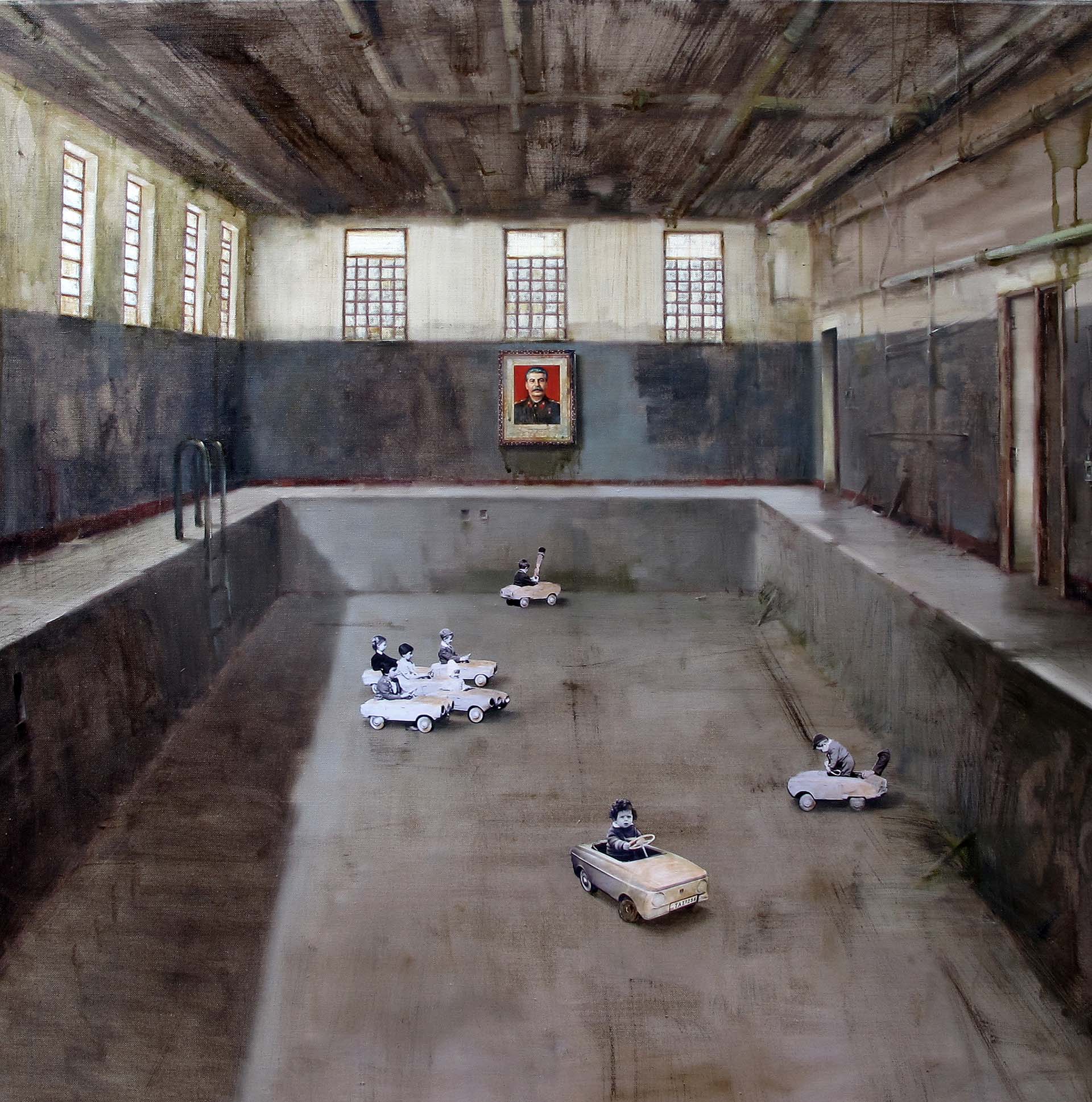
Tato Akhalkatsishvili. BORN IN... 100x100 cm. Oil, canvas, collage. 2013
The artwork is currently held and exhibited at the Georgian Museum of Fine Arts.

Tato Akhalkatsishvili. CHILDHOOD / 03. 55x100 cm. Oil, canvas, collage. 2013
It simultaneously conveys the delightful, unconscious state of a child and the content already "solved" by the adult- a dramatic context, the époque with its destructive history. The sinister, tense atmosphere characteristic of paintings of this period is constructed at the expense of the meeting of these two different times. Next period is more meditative and the theme of the horizon is altered by a vertical, maintaining a strong tension here too and it is created by underlying boundaries. Each picture from series- “Conversation”, depicting a segment of sky, spotted from a high, concrete-walled narrow atrium base, creates an impressive image. “A hole” is a working title of this series and, in a more exaggerated way, it refers to the light, seen from the abyss. Geometric abstraction - built with the walls of the atrium, its edges, poles stretched like a bridge from above, linear shadows, synthesizes with the classic motif of the landscape - forest, moon, stars at night, etc. The encounter of these two contrasting motives forms one of the key methods for Tato’s artistic expression.

Tato Akhalkatsishvili.CONVERSATION 01. 70x70 cm. Oil, canvas.2014

Tato Akhalkatsishvili.CONVERSATION 02. 80x80cm. Oil, canvas.2014
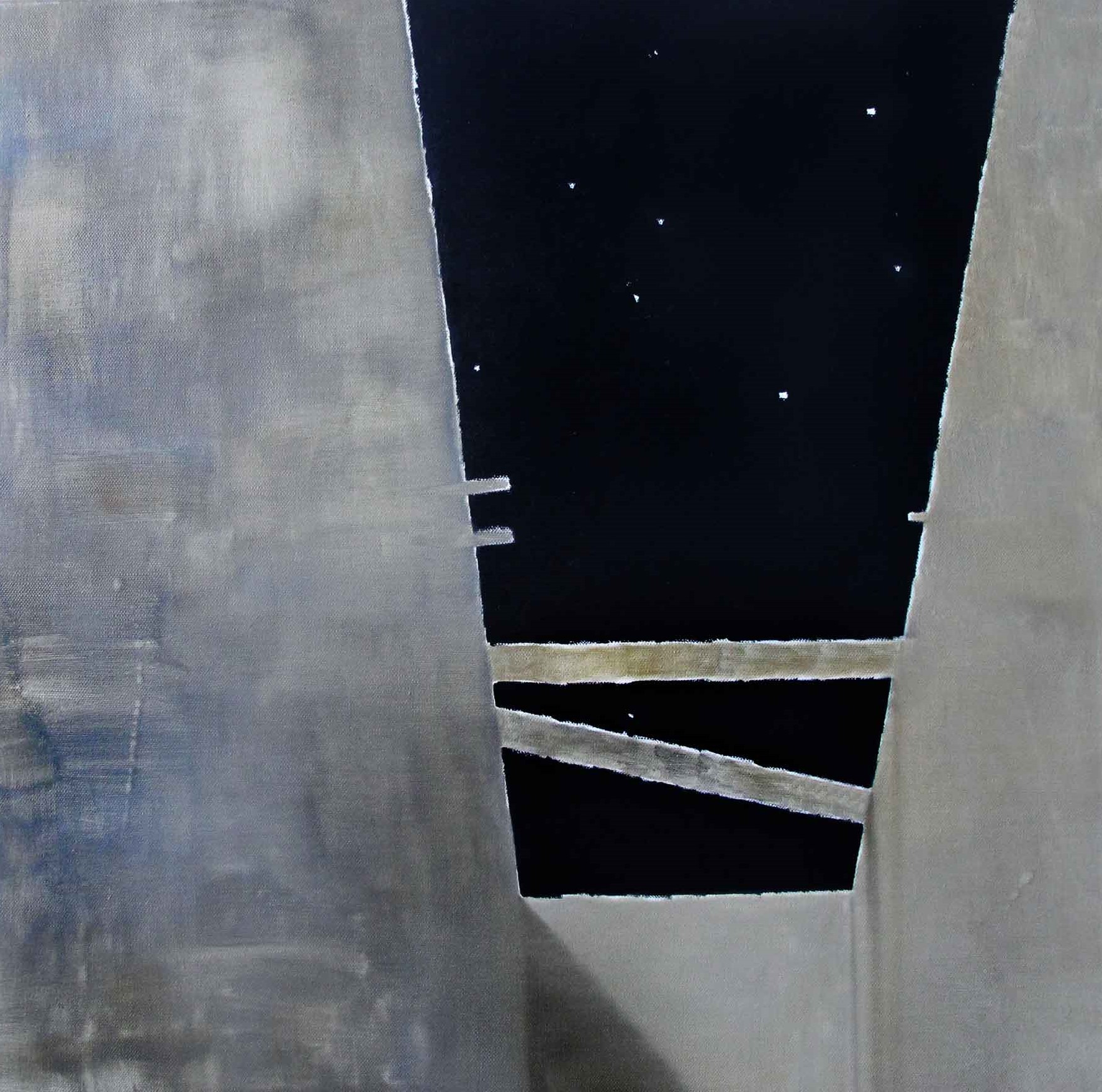
Tato Akhalkatsishvili.CONVERSATION 03. 70x70 cm. Oil, canvas.2014
The quest for conditions at the edge of the Abstract was quite logically pursued by an interest in psychedelic images, which was finally completed by the multi-media exhibition, held in “The European House” (Tbilisi) in 2015. Hallucinogenic mushrooms was inspired by photo documentation of post-World War II military experiments. While testing the nuclear weapon in 1946, the US operation “Crossroad” caused series of explosions at Bikini Atoll in the Marshal islands. The experiment was followed by ecological problems, having become an issue in media. In the background of the discussions, the designer Louis Rear presented a new type of swimsuit, which, unlike its predecessors, was split in two parts - "Bikini - split atom."
Documentary footage of the explosion are compared with the images of giant mushrooms or flowers, where the reality and the absurd become almost surreal visions and, surely, evoke associations of mushrooms with hallucinogenic effects. Hallucinogenic Mushrooms , in general, shows a space full of complex, emotional and mysterious psychological moods characteristic of Tato Akhalkatsishvili's painting, where the solid system of visual signs reveals motives, like games of powers and outcomes of the monopoly over technologies.
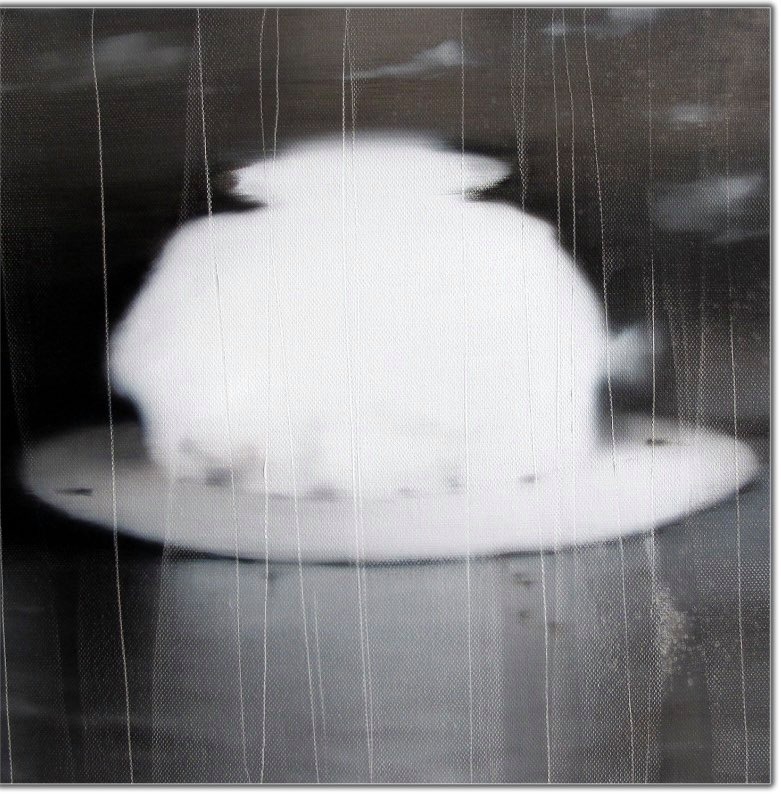
Tato Akhalkatsishvili. PSILOCYBIN MUSHROOMS 12. 40x40 cm. Oil, canvas.2015
Further development of Hallucinogenic Mushrooms was later revealed in his impressive and multi-layer painting AMANITA MUSCARIA- a certain sort of a symbol of hallucinogenic trance in the apocalyptic universe.
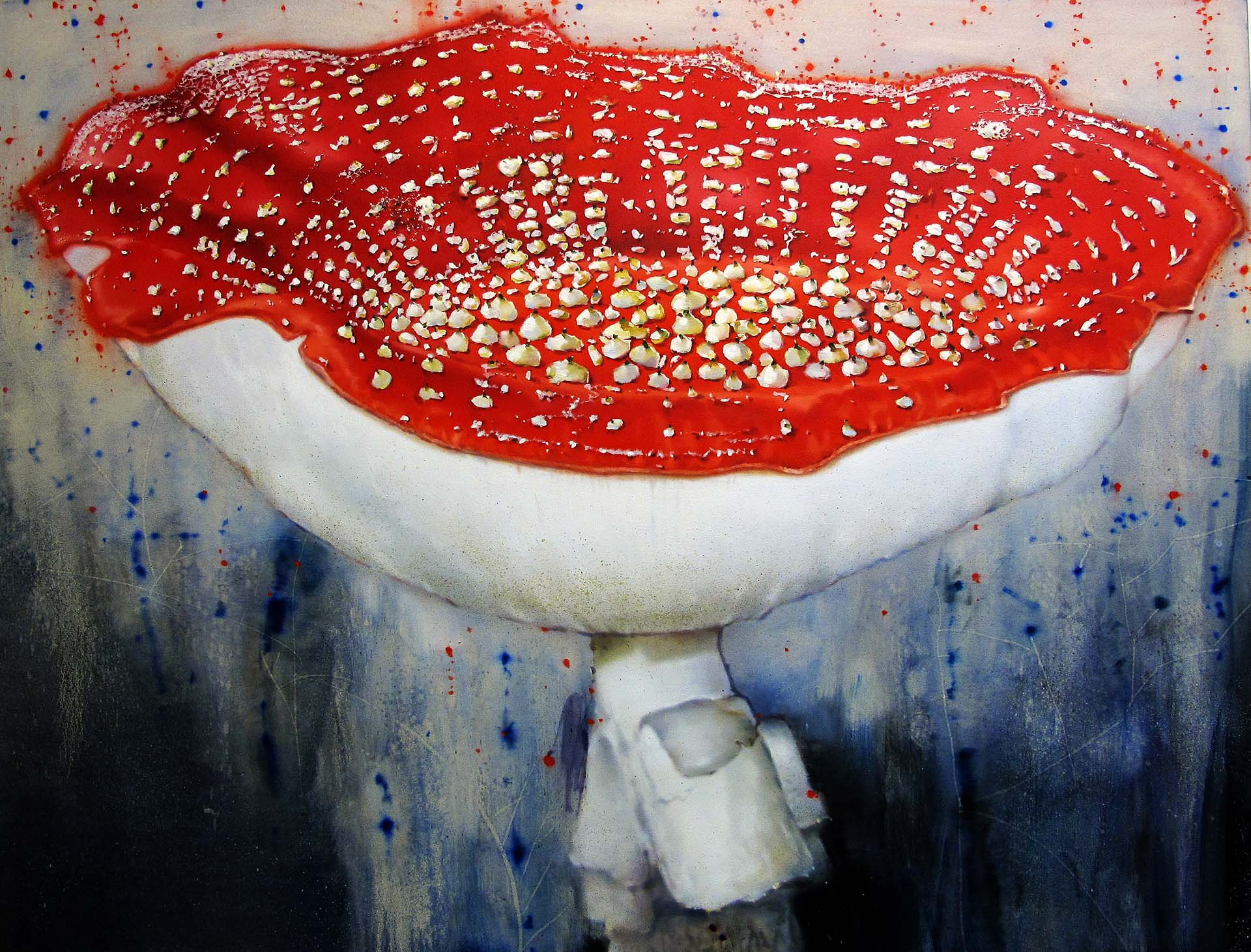
Tato Akhalkatsishvili. AMANITA MUSCARIA. Oil, canvas. 130x170 cm. 2017
Tension sharply increases in Tato Akhalkatsishvili's recent works, which are no longer presented in the form of separate works or thematic series. It seems to sink in strong, endless dramaturgy by means of symbolic, Hitchcock and Lynch allusions.
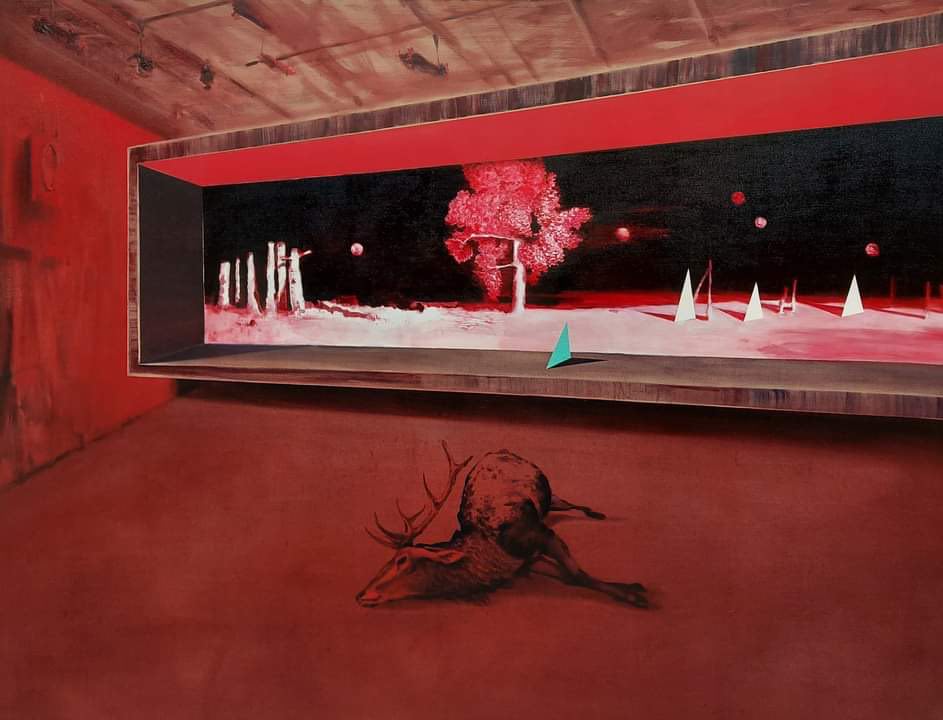
Tato Akhalkatsishvili. UNTITLED PICTURES OF THE INDEFINITE FUTURE. 150x200cm. Oil, canvas. 2020
Cinematographic associations are unambiguous and emphatically dramatic in the recent work: Untitled pictures of indefinite future.
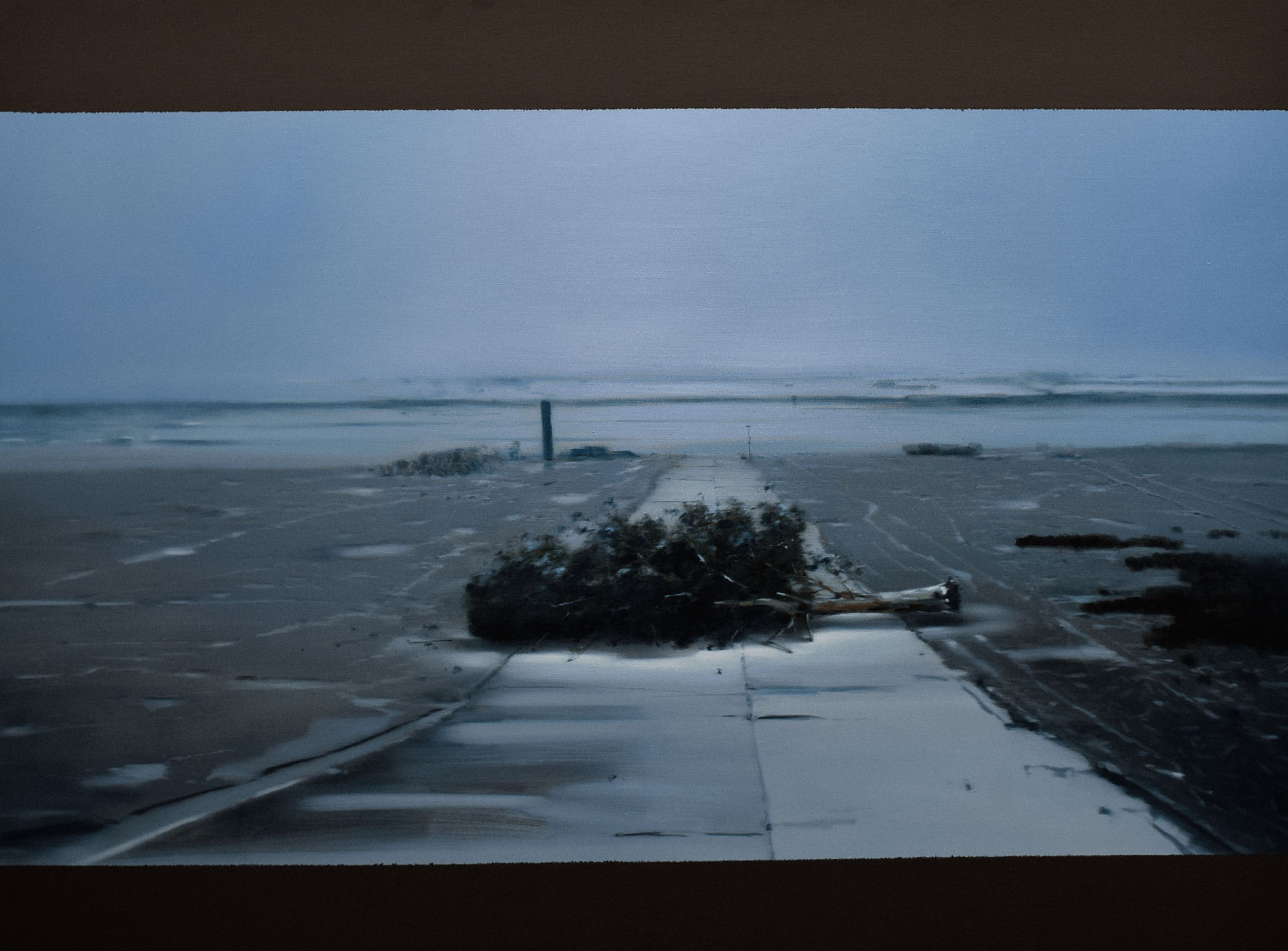
Tato Akhalkatsishvili. Untitled pictures of indefinite future. 150x200 cm. oil, canvas. 2020
The picture that translates “listening to silence” into visual language. An open, seemingly eternally unaltered space and the road, barred by the cut wood. Tato Akhalkatsishvili to depict mysterious spontaneity of Death, often applies to paradoxes, characteristic to surrealistic pictures - multi-storeyed cake in Gothic style, a dead bird with an amazing landscape as a background, or a stuffed furry animal in installation elements.
Any context, being developed in his projects, regularly carries with him a parallel ongoing internal discussion about the tasks of contemporary painting, its capabilities and yet unexplained features. These discussions are provoked by the context of Javakheti expeditions and it might suggest new puzzles of the landscape.